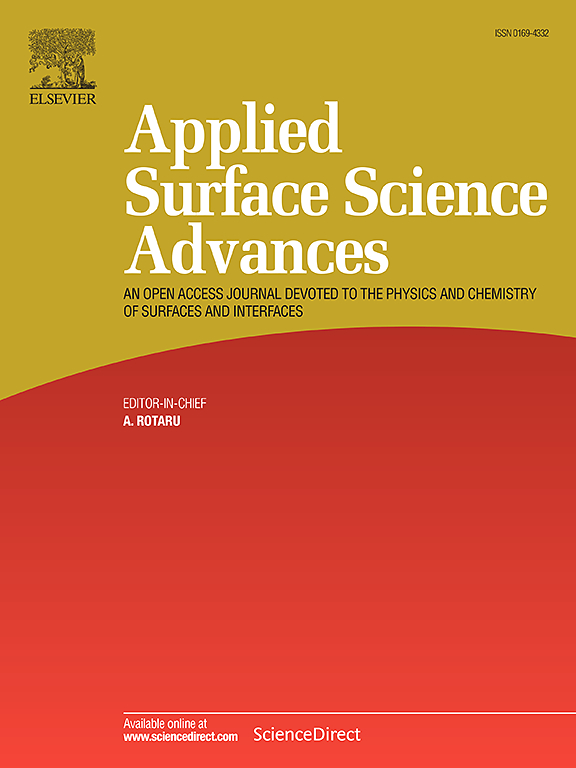Influence of nickel concentration on multi-scale mechanical properties and wear behavior of NiTi alloys processed via laser powder bed fusion
IF 8.7
Q1 CHEMISTRY, PHYSICAL
引用次数: 0
Abstract
Nickel – titanium (NiTi) alloys are a promising class of advanced materials that exhibit unique mechanical properties, enabling their use in a wide range of industrial applications. Powder bed fusion laser beam (PBF-LB), one of the prominent additive manufacturing processes, has been widely utilized for fabricating NiTi alloy parts. However, the effect of Ni concentration on the tribological behavior of NiTi alloys has not previously been examined. In this study, two NiTi alloys were successfully fabricated using PBF-LB: Ni51.1Ti48.9 at.% alloy and Ni49.8Ti50.2 at.% alloy. The microstructure, microhardness, nano-scale properties and reciprocating wear behavior of these alloys were systematically investigated. Microstructural analysis revealed fine equiaxed structures interspersed with columnar dendrites in the Ni49.8Ti50.2 at.% alloy, whereas slightly coarser equiaxed cells were observed in the Ni51.1Ti48.9 at.% alloy. The Ni49.8Ti50.2 at.% alloy also exhibited higher micro and nanohardness compared to the Ni51.1Ti48.9 at.% alloy. Both as-printed NiTi alloys demonstrated a difference in the coefficient of friction (COF), with Ni51.1Ti48.9 at.% alloy achieving a slightly lower COF of 0.72, compared to 0.76 for Ni49.8Ti50.2 at.%. However, the as-printed Ni49.8Ti50.2 at.% alloy exhibited superior wear resistance, which correlated well with the micro and nanohardness, hardness to elastic modulus (H/E) ratio and strain hardening capacity. Ex-situ analysis indicated that the improved wear resistance of the Ni49.8Ti50.2 at.% alloy was primarily attributed to the stable tribolayers along the wear track, emerged as a dominant wear resistance mechanism, which was absent for the Ni51.1Ti48.9 at.% alloy. These results suggest that the lower Ni content alloy (Ni49.8Ti50.2 at.%) is a better candidate for tribological interfaces under heavy loading conditions, making it suitable for various industrial uses.
镍浓度对激光粉末床熔合NiTi合金多尺度力学性能和磨损行为的影响
镍钛(NiTi)合金是一类很有前途的先进材料,具有独特的机械性能,使其在工业应用中得到广泛的应用。粉末床熔合激光束(PBF-LB)是一种重要的增材制造技术,已广泛应用于制备NiTi合金零件。然而,Ni浓度对NiTi合金摩擦学行为的影响尚未被研究过。在本研究中,利用PBF-LB: Ni51.1Ti48.9 at成功制备了两种NiTi合金。%合金和Ni49.8Ti50.2 at。%合金。系统地研究了合金的显微组织、显微硬度、纳米级性能和往复磨损性能。显微组织分析显示,Ni49.8Ti50.2 at合金中分布有细小的等轴组织和柱状枝晶。而在Ni51.1Ti48.9 at合金中观察到稍粗的等轴细胞。%合金。Ni49.8Ti50.2 at。合金的显微和纳米硬度也高于Ni51.1Ti48.9 at。%合金。两种合金的摩擦系数(COF)均有差异,Ni51.1Ti48.9 at。合金的COF值为0.72,而Ni49.8Ti50.2 at.%合金的COF值为0.76。然而,作为打印Ni49.8Ti50.2 at。合金具有优异的耐磨性,其耐磨性与显微硬度、纳米硬度、硬度/弹性模量(H/E)比和应变硬化能力密切相关。非原位分析表明,Ni49.8Ti50.2 at的耐磨性得到提高。在Ni51.1Ti48.9 at合金中,不存在稳定的摩擦层,这主要归因于沿磨损轨迹的稳定摩擦层。%合金。这些结果表明,Ni含量较低的合金(Ni49.8Ti50.2 at.%)是重载条件下摩擦学界面的较好候选合金,适用于各种工业用途。
本文章由计算机程序翻译,如有差异,请以英文原文为准。
求助全文
约1分钟内获得全文
求助全文

 求助内容:
求助内容: 应助结果提醒方式:
应助结果提醒方式:


